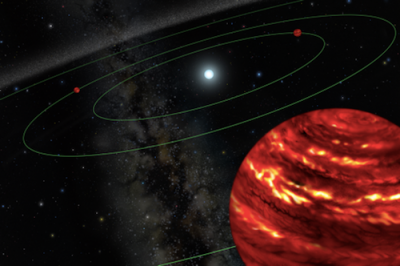
The Milky Way is the galaxy in which Earth resides. Part of it is visible on a clear night (from sufficiently dark locations) as a thick opaque band of stars and dust stretching across the sky. We can see thousands of these stars with the naked eye, and many more with a telescope. But how many stars are in the Milky Way?
“It’s a surprisingly difficult question to answer,” said David Kornreich, an assistant professor at Ithaca College in New York. “You can’t just sit around and count stars, generally, in a galaxy.”
Even in the Andromeda galaxy — which is bright, large and at 2.3 million light-years away relatively close to Earth — we can distinguish only the largest and brightest stars. A sun-size star would be too difficult for us to see.
So is there any way to figure out how many stars are in the Milky Way for sure?
According to Jos de Bruijne, a scientist at the European Space Agency (ESA) who works on the galaxy-mapping Gaia mission, the current estimate is between 100 to 400 billion stars. Getting to a definitive number, de Bruijne told Space.com, will be difficult.
The Gaia mission, in orbit since 2013, has managed to map positions of 1.7 billion stars in the sun’s neigborhood up to the distance of 326 light-years. While astronomers could extrapolate those numbers to model the entire galaxy, even Gaia struggles to see some of the faintest and smallest stars and its results are therefore not perfectly accurate.
“The fundamental problem is to measure the luminosity [distribution] for very faint red dwarfs and then extrapolate to the brown-dwarf limit,” de Bruijne told Space.com.
Red dwarfs are the most common stars in the universe and also the longest-lived ones. However, because of their low luminosity they are sometimes hard to spot. Brown dwarfs are even dimmer. These are basically failed stars that didn’t manage to accumulate enough material to kick-start nuclear fusion in their core. They are therefore something between a star and a planet and therefore even more difficult to spot than faint red dwarfs, especially at long distances.
“A second complication for the entire story are double stars, the frequency of which is still not perfectly characterised,” de Bruijne added.
De Bruijne expects that by the end of Gaia’s mission in 2025, scientists will have a somewhat better idea about the number of stars in our galaxy but “significant uncertainties will likely remain”.
Credit : Space.com
Picture Credit : Google
Leave a Reply